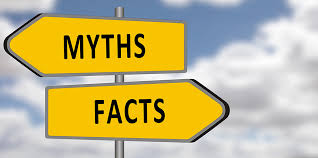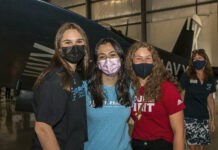Though we regularly promote our annual ICAS convention as a greenhouse for interesting air show ideas, the “all air show, all the time” nature of the convention can also act as fertilizer for myths, misunderstandings and misconceptions. From one end of Bally’s Hotel to another for four days during our convention last December, I found myself engaged in discussions on a number of interesting and sometimes difficult air show issues. But these are issues that are topics of conversation throughout the air show industry
throughout the year. So I’d like to discuss some of them here today and use that discussion as an opportunity to encourage air show professionals throughout North America to work through the difficult problems – both real and rumored – that face our industry.
Myth #1
A free sponsored act doesn’t cost anything.
In many cases, a corporately sponsored performer offers to fly at an air show without a fee so that the performer can expose his sponsor’s message to the tens of thousands of spectators expected to attend that show. But, invariably, that “free” performer makes certain requests of the event organizer IN LIEU OF PAYMENT: advertising, publicity announcements by the air show announcer, chalets, ramp space, banners, and exclusivity, to name a few of the typical items. Event organizers who don’t honor those requests are cheating the performer just as surely as if they refused payment. Worse, in fact, because the event organizer is not only reneging on his agreement with the performer; he is also making it impossible for the performer to honor the terms of his contract with his sponsor, thereby putting that performer’s sponsorship deal in jeopardy.
At a different level, event organizers who don’t live up to their end of these types of arrangements are suggesting to Corporate North America that the air show community is not “sponsor friendly.” To make matters worse, most performers won’t complain because they feel that they can’t run the risk of developing a reputation as a whiner or prima dona among event organizers.
Bottom line? If you secure a sponsored performer by promising to deliver certain services in lieu of payment, do yourself and our industry a favor: make good on those promises.
Myth #2
The number of air shows in North America is and has been in decline.
This is quantifiably and unequivocally not true. Between 1990 and 2000, the number of event organizer members in ICAS increased from 222 to 324. That’s a 45 percent increase in ten years. Similarly, the FAA reports a steady and continuous increase in the number of air show waivers issued over the last ten years. Between now and the middle of November, nearly 425 air shows will be held in the United States and Canada. That’s an eight-month long air show season with an AVERAGE of nearly twelve shows every week from late March through mid-November. We want to continue our efforts to make every one of those shows ICAS members, but – member or not – it’s clear that the number of air shows in North America is large and still increasing.
But the air show industry isn’t just producing a lot of shows. Our industry is consolidating and improving its existing shows. Though quantitative evidence of this trend is not available, qualitative evidence is all around us. From Ft. Lauderdale to Seattle, from El Paso to Oshkosh, and from San Diego to Cleveland, the air show community is becoming more sophisticated and more business-like.
That said, there are good reasons for the perception that the total number of air shows is decreasing…particularly if you’re a performer trying to book a show. Between 1987 and 2000, the number of performer members in ICAS more than tripled from 119 to 370. In just the last five years, the number of Statement of Aerobatic Competency cards issued to aerobatic air show performers has increased from less than 300 to nearly 500. As an industry, we should have serious concerns about this growing imbalance of performers and shows, but we should not misunderstand this problem as a drop in the number of air shows being held in the United States and Canada.
Myth #3
ICAS is primarily interested in helping big-name and corporately sponsored performers.
Like all associations, ICAS often draws its leaders from among the most veteran and high-visibility members. But, the principal beneficiary of their involvement is ICAS. Corporately-sponsored performers are our principal source of convention sponsors, a group that contributes significantly and generously to the success of our annual convention. Veteran and well-funded performers are also the most likely to advertise in our publications, which raises their visibility, but which has also helped fund the improvements to those publications. They also provide the voice of experience to our seminar sessions and magazine articles.
Drawing on the experience of veteran members is a time-honored tradition in the association business. That this sometimes puts those veterans in the spotlight more often than other members is largely an irrelevant consequence of the hard work and time they commit to the organization.
Much of what ICAS does on a day-to-day basis is specifically oriented toward helping the new, regional and less-well-known performers: our “Have You Met…” features in Air Shows Magazine, the exhibit hall booths at the annual convention, our website, our new on-line press kit program, and our trading card program are all aimed at providing exposure and service to all ICAS members. The veteran and corporately-sponsored performers either already have access to these kinds of programs or don’t need them.
More than all of that, though, the ICAS staff and our elected ICAS leadership understand that it is the new, regional and less-well-known performers who form the backbone of ICAS and the future of the air show industry. If we were to lose every one of our nationally-sponsored performer members, ICAS would lose eight or ten members. If we also lost the high-visibility veteran performers, we’d lose another 20-30 members. But if we were to lose our new, regional and less-well-known performers, we might see the departure of 175-200 members.
Myth #4
ICAS only serves the interests of big shows.
First, see Myth #3.
Secondly, ICAS could more appropriately be accused of only serving the interests of SMALL shows. Our ICAS Academy, our Air Shows 101 course, virtually the entire convention education program and the vast majority of our editorial coverage in Air Shows Magazine are focused on the needs and interests of small, struggling and new air show organizers. We don’t always put “small show” in the title of the educational session or the magazine article. And it’s true that we often draw on the representatives of large and established show for seminar sessions and magazine quotes. But it is because they did things well that they went from being a small show to being a large and successful show. When we ask representatives from EAA to come to our convention and talk about their sponsorship program, we expect representatives from small shows to understand that this session will shed light on and offer direction to the sponsorship efforts of both small shows and large shows. Interesting and useful ideas on how to make a small show better don’t always come from other small show organizers. They sometimes come from large show organizers. They sometimes come from performers. They might even come from a professor of drama speaking on lighting, music and choreography in the circus.
Myth #5
ICAS focuses more on the needs of air shows than it does on the needs of air show performers.
Guilty. For years, ICAS has seen the success of its event organizer members as one important key to the success of its performer and support service provider members. Clearly, the entire industry needs safe, entertaining, and financially stable events to act as the bridge to our audience, our corporate funding, our community support and, ultimately, our collective success…financial and otherwise. And just as clearly, it is the event organizers who face the largest number and widest variety of organizational challenges…from sponsorship and marketing to airport and community relations to volunteer management, contracting issues and the multiple challenges of moving tens of thousands of people on and off of an airport on two particular days every year.
Myth #6
The ACE program is a cash cow for ICAS that does little to help air show safety.
For years, ICAS lost tens of thousands of dollars each year on its administration of the ACE program. From the first day that ICAS took over the administration of the program in 1991, the administrative fee charged by ICAS was never enough to cover costs of the program. Though the ICAS Board of Directors struggled for nearly two years over the decision to raise rates, it eventually decided that it was fiscally irresponsible to the rest of the ICAS membership to continue losing money on the ACE program. Last year’s fee increase from $100 to $200 simply allowed ICAS to begin breaking even on the program.
But ICAS administration of the program is having the effect hoped for when – eleven years ago following a horrifying three-year period that saw 36 air show accidents — the FAA suggested that veteran air show pilots take responsibility for conducting aerobatic evaluations, rather than the FAA field inspectors who had previously conducted the evaluations. ICAS agreed to administer the program and, beginning in 1991, ICAS-designated Aerobatic Competency Evaluators (ACEs) began conducting evaluations. In the ten years that ICAS has been involved with the ACE program, the air show industry has had an average of 4.3 accidents per year.
Though it would stretch credibility to suggest that the resultant drop in accidents was entirely a function of ICAS administration of the program, the number of accidents did drop…dramatically! Is ICAS administration of the ACE program the only reason behind this decrease? Probably not. Did ICAS involvement make it more time-consuming, difficult and expensive to secure a Statement of Aerobatic Competency card? Undeniably! Is there a small group of air show pilots who remain angry and disappointed that ICAS become involved with the ACE program ten years ago. Absolutely! But, just as clearly, the evaluation of air show pilots by their peers did something to improve the accident rates in our business that wasn’t being accomplished when FAA inspectors were conducting those evaluations.
Myth #7
The air show business is on the verge of becoming “the next NASCAR.”
Though many feel that the air show business is on the verge of finally living up to its considerable potential as a major player in the entertainment business, I would argue that we’re not on the verge of becoming the “next” anything…for a few reasons.
To begin with, ours is a unique product: part festival, part aviation exposition, part circus. The air show business also has a unique structure that defies categorization. There is no such thing as a “standard” show and most shows take special pleasure in that individuality. Collectively and individually, air shows attract uniquely large crowds comprised largely of demographically desirable (from Corporate North America’s perspective) spectators. They’re fun. They’re inexpensive. They’re safe for spectators. They’re educational. And, more to the point, they are a truly and dependably unique form of family entertainment.
Much as we’d like to, the NASCAR road to success is not a road down which we can travel. And though there are certainly lessons to be learned from other industries, we must blaze a trail that is different than that created by professional wrestling, figure skating, the Olympics, and the X-Games.
Together, we can realize the considerable potential that we all know this business has. Though comparisons to other entertainment industries can be comfortable shorthand for making complicated points about the future growth of our business, the air show industry needs to create its own success story unburdened by interesting, but ultimately misleading comparisons to businesses that bare little resemblance to the aviation spectaculars that we organize and conduct 400 times every year.








